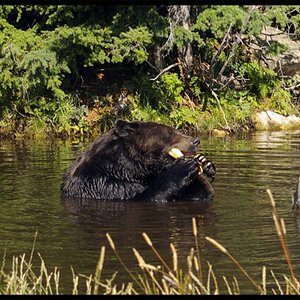Navigation
Install the app
How to install the app on iOS
Follow along with the video below to see how to install our site as a web app on your home screen.

Note: This feature currently requires accessing the site using the built-in Safari browser.
More options
You are using an out of date browser. It may not display this or other websites correctly.
You should upgrade or use an alternative browser.
You should upgrade or use an alternative browser.
µFourThirds to the Test
- Thread starter chuasam
- Start date
jaomul
Been spending a lot of time on here!
- Joined
- Feb 4, 2011
- Messages
- 5,715
- Reaction score
- 1,554
- Location
- Cork Ireland
- Can others edit my Photos
- Photos OK to edit
Them food shots are at 204000 iso 
Tomasko
No longer a newbie, moving up!
- Joined
- Oct 17, 2010
- Messages
- 708
- Reaction score
- 76
- Can others edit my Photos
- Photos OK to edit
I don't know, a friend came over just yesterday with Olympus OM-D E-M1, a battery grip and few pro lenses, and we both rather shot with my Canon 6D instead...
Not sure what you see about these cameras. The moment you use a grip with a larger lens, it gets heavy, even heavier than my FF with an L lens.. If you don't use a grip, it's far too small and uncomfortable and this is coming from someone who really doesn't have large hands. The viewfinder shakes every time I focus on something, colours are far from realistic, not really a pleasant experience.
Sure, the camera has some handy features, but it has a long way before it could replace a dslr in my eyes. At first I thought I'm just being jealous or whatever, but after using one I'm sorry to report I don't see myself using one any time soon. I'll definitely try out other brands too (fuji/sony), but if this is a $2000 camera, I'm really worried and really puzzled.
Not sure what you see about these cameras. The moment you use a grip with a larger lens, it gets heavy, even heavier than my FF with an L lens.. If you don't use a grip, it's far too small and uncomfortable and this is coming from someone who really doesn't have large hands. The viewfinder shakes every time I focus on something, colours are far from realistic, not really a pleasant experience.
Sure, the camera has some handy features, but it has a long way before it could replace a dslr in my eyes. At first I thought I'm just being jealous or whatever, but after using one I'm sorry to report I don't see myself using one any time soon. I'll definitely try out other brands too (fuji/sony), but if this is a $2000 camera, I'm really worried and really puzzled.
chuasam
Been spending a lot of time on here!
- Joined
- Feb 9, 2012
- Messages
- 3,588
- Reaction score
- 928
- Can others edit my Photos
- Photos NOT OK to edit
The EM1 is old. I’m using the less expensive EM5 II. I haven’t taken out the D810 on this trip yet. The city requires a lot of walking.
EXIF meh. I’ve posted this right off my iPad after pulling the images from my card.


EXIF meh. I’ve posted this right off my iPad after pulling the images from my card.
Tomasko
No longer a newbie, moving up!
- Joined
- Oct 17, 2010
- Messages
- 708
- Reaction score
- 76
- Can others edit my Photos
- Photos OK to edit
chuasam
Been spending a lot of time on here!
- Joined
- Feb 9, 2012
- Messages
- 3,588
- Reaction score
- 928
- Can others edit my Photos
- Photos NOT OK to edit
@chuasam , sorry, I forgot to say it was mark II, not the old version. I can see its benefits, but I just can't see it as a full replacement for a dslr. At least not any time soon.
I totally haven’t touched my DSLR yet. I think it is a great camera for vacation and for people who travel lots and need something lighter.
The buttons and ergonomics on my D810 are far better but I love the light weight and smaller system when I’m not working.
Solarflare
No longer a newbie, moving up!
- Joined
- May 24, 2012
- Messages
- 2,898
- Reaction score
- 395
Technically, MFT is pretty pointless.
Even if the advantage of APS-C to MFT was rather miniscule (which of course it isnt) - an APS-C sensor costs maybe $50, probably less, in production. Compared to the price of making a camera, thats already nothing. Thus using even smaller sensors saves nothing in respect to cost.
And having larger sensors makes lens design easier. The maximum aperture doesnt need to be made so high - at a certain barrier, it gets really complicated to offer even more aperture. Plus the demands in manufacturing precision of course raise with smaller sensors. So you dont save anything at all at that end with smaller sensors, either.
Low maximum aperture also means the maximum light per area isnt as high, which means the photographer doesnt have to stop down because he has hit maximum shutterspeed and still gets too much light in bright sunlight.
Lens size isnt much of a valid argument either. A Leica trinity 28mm f2.8, 50mm f2, 90mm f4 macro for full frame is still quite miniscule. A reasonable current Nikon trinity like AF-S 20mm f1.8, AF 35mm f2, Tokina 100mm f2.8 macro also isnt exactly killing you with their weight.
People who like a high quality 3x zoom trinity instead (something like Nikons 14-24mm, 24-70mm, 70-200mm at f2.8) might indeed complain about their weight, but they can get lightweight options from Fujifilm X etc. In fact Fujifilm already has one of the best convenience zooms - the 18-135mm - if thats your thing.
Sure you can have more demands for focal range and then sensors will have to get smaller. Like the Nikon P900 with what was its focal length range again ? I think something like 24-2000mm small format equivalent ? Quickly even MFT will be too large for such extreme cameras. But thats a special case.
So why does MFT still exist ? Well there are historical reasons - there was a time when even APS-C sensor have been really expensive. And currently they at least have at least one niche - old people who have problems to keep their camera stable. And MFT also benefits from simply being small and thus able to use certain new technologies first, such as backlit.
However, with the Nikon D850 even full frame is backlit now.
And the niche of people who cant hold their camera steady, if the rumor mill is to be believed, will soon be targeted by Fujifilm too, since they apparently also want to integrate sensor stabilization into their cameras. As long as you only use prime lenses and dont demand too extreme focal length - Fujifilm offers you plenty of small and great glas. And Fujifilm really aint that much heavier than MFT with usual lenses.
Thus personally I wouldnt be too surprised if MFT will be gone in 5-10 years.
Whats the comparison with a true high ISO monster, like the Nikon D500 ? Heck, what is it to an average design, like the Nikon D7200 ?
Even if the advantage of APS-C to MFT was rather miniscule (which of course it isnt) - an APS-C sensor costs maybe $50, probably less, in production. Compared to the price of making a camera, thats already nothing. Thus using even smaller sensors saves nothing in respect to cost.
And having larger sensors makes lens design easier. The maximum aperture doesnt need to be made so high - at a certain barrier, it gets really complicated to offer even more aperture. Plus the demands in manufacturing precision of course raise with smaller sensors. So you dont save anything at all at that end with smaller sensors, either.
Low maximum aperture also means the maximum light per area isnt as high, which means the photographer doesnt have to stop down because he has hit maximum shutterspeed and still gets too much light in bright sunlight.
Lens size isnt much of a valid argument either. A Leica trinity 28mm f2.8, 50mm f2, 90mm f4 macro for full frame is still quite miniscule. A reasonable current Nikon trinity like AF-S 20mm f1.8, AF 35mm f2, Tokina 100mm f2.8 macro also isnt exactly killing you with their weight.
People who like a high quality 3x zoom trinity instead (something like Nikons 14-24mm, 24-70mm, 70-200mm at f2.8) might indeed complain about their weight, but they can get lightweight options from Fujifilm X etc. In fact Fujifilm already has one of the best convenience zooms - the 18-135mm - if thats your thing.
Sure you can have more demands for focal range and then sensors will have to get smaller. Like the Nikon P900 with what was its focal length range again ? I think something like 24-2000mm small format equivalent ? Quickly even MFT will be too large for such extreme cameras. But thats a special case.
So why does MFT still exist ? Well there are historical reasons - there was a time when even APS-C sensor have been really expensive. And currently they at least have at least one niche - old people who have problems to keep their camera stable. And MFT also benefits from simply being small and thus able to use certain new technologies first, such as backlit.
However, with the Nikon D850 even full frame is backlit now.
And the niche of people who cant hold their camera steady, if the rumor mill is to be believed, will soon be targeted by Fujifilm too, since they apparently also want to integrate sensor stabilization into their cameras. As long as you only use prime lenses and dont demand too extreme focal length - Fujifilm offers you plenty of small and great glas. And Fujifilm really aint that much heavier than MFT with usual lenses.
Thus personally I wouldnt be too surprised if MFT will be gone in 5-10 years.
Nobody (sane) ever accused the Canon 5Ds of good high ISO performance. Thats a pure ISO 100 studio camera. The D810 isnt exactly the greatest high ISO camera either.I shot a dance pushing the ISO as high as 1250...it was pretty comparable to my D810 at 1600 and far far far superior to the 5DsR that I borrowed from Canon a few years back.
Whats the comparison with a true high ISO monster, like the Nikon D500 ? Heck, what is it to an average design, like the Nikon D7200 ?
When it comes to performance, M4/3 isn’t going to win against APS-C. The main reason I like M4/3 is I don’t have to spend a fortune to get some impressively good lenses which also happen to be very compact. My 40-150 zoom (FF equivalent being 80-300) is 3-4” long, cost $199 and is amazing for the price:
View attachment 147532
For travel, backpacking and hiking it’s easy to take along with a couple lenses and will out perform most compact cameras. That said, my next camera will probably not be M4/3. The M4/3 sensor is just too far behind the current APS-C sensors. I want something better than 16-20 MP and I want faster low light performance so I can capture Northern Lights and similar without going to 20 sec exposures. That said, the sensor itself will probably be around for a while longer. It’s perfect for drones and other applications that need light weight and small. Below was shot with an M4/3 sensor on a phantom 4 drone:

You can see I used a lot of noise reduction, which, given that I was shooting at night from a moving, vibrating platform is to be expected. It does better with better light. Below is from the same location looking the other way earlier in the day.
View attachment 147533
Sent from my iPhone using Tapatalk
View attachment 147532
For travel, backpacking and hiking it’s easy to take along with a couple lenses and will out perform most compact cameras. That said, my next camera will probably not be M4/3. The M4/3 sensor is just too far behind the current APS-C sensors. I want something better than 16-20 MP and I want faster low light performance so I can capture Northern Lights and similar without going to 20 sec exposures. That said, the sensor itself will probably be around for a while longer. It’s perfect for drones and other applications that need light weight and small. Below was shot with an M4/3 sensor on a phantom 4 drone:
You can see I used a lot of noise reduction, which, given that I was shooting at night from a moving, vibrating platform is to be expected. It does better with better light. Below is from the same location looking the other way earlier in the day.
View attachment 147533
Sent from my iPhone using Tapatalk
Last edited:
chuasam
Been spending a lot of time on here!
- Joined
- Feb 9, 2012
- Messages
- 3,588
- Reaction score
- 928
- Can others edit my Photos
- Photos NOT OK to edit
I had a Canon 80D for a week. I was severely unimpressed. It had the bulk of the DSLR but did not have the performance of my D810. I’ve been on vacation for 5 days now and I have shot entirely with just the EM5 II. I’ll take the D810 tomorrow when I’m at the zoo because I don’t have a long lens for the Olympus.
john.margetts
No longer a newbie, moving up!
- Joined
- Dec 3, 2015
- Messages
- 1,100
- Reaction score
- 279
- Location
- Lincoln
- Can others edit my Photos
- Photos OK to edit
I rather like my micro 4/3 Olympus Pen. Sure, its image quality is not as good as my EOS 80D but it is a lot more portable when about other duties. If I am going shopping with Bestbeloved it is the Pen I take, not the DSLR.
In good light, the IQ is fine - I have a A3 print from it in a refereed exhibition at the moment. If I am really concerned about IQ, it will be my Bronica, not a digital at all.
In good light, the IQ is fine - I have a A3 print from it in a refereed exhibition at the moment. If I am really concerned about IQ, it will be my Bronica, not a digital at all.
petrochemist
TPF junkie!
- Joined
- Mar 9, 2014
- Messages
- 1,873
- Reaction score
- 608
- Can others edit my Photos
- Photos OK to edit
I thought you post was highly pointless. Many of the points you make are irrelevant or erroneous.Technically, MFT is pretty pointless.
<snip>
To camera users the estimated wholesale cost of the sensor itself is meaningless - it's the camera as a whole that gets purchased.
MFT lenses are not automatically harder to design, most of the lenses I've used with mine (admittedly not the most frequently used ones) were designed before MFT came out - many that don't work with my DSLR work perfectly with MFT. In most cases f5.6 is quite workable in MFT, but if I need f1.2 it's achievable much cheaper than with a DSLR.
Despite your claims my MFT bag is significantly lighter than my DSLR bag when both have a similar range of native lenses. This is despite the fact the MFT bag has an extra body! (The extra is IR converted)
Most of the time the MFT is the kit I'll take, with the DSLR bag being mainly reserved for low light & motorsports etc.
I'm pretty sure I'll still be shooting MFT in 5-10 years
john.margetts
No longer a newbie, moving up!
- Joined
- Dec 3, 2015
- Messages
- 1,100
- Reaction score
- 279
- Location
- Lincoln
- Can others edit my Photos
- Photos OK to edit
People said the same about 1/4 plate, then roll film, then 35 mm. For over 150 years the trend has been towards smaller sensors and that will continue until we are using individual quarks to form pixels.Technically, MFT is pretty pointless.
<snip>
chuasam
Been spending a lot of time on here!
- Joined
- Feb 9, 2012
- Messages
- 3,588
- Reaction score
- 928
- Can others edit my Photos
- Photos NOT OK to edit
I would have been too lazy to photograph my Phad Thai if I had to carry a big camera.
Pandan Chicken...
I mean with a MFT I am more inclined to carry a camera.
Having photos much better than not having any.
fmw
No longer a newbie, moving up!
As technology advances, big sensors and big cameras and lenses are becoming less relevent. People have a natural tendency to fight change. It is perfectly normal. If I were to buy a second system (not likely) it would probably have a smaller sensor than my APS-C format system.
My first camera was a Speed Graphic - a rather large 4X5 format press camera. It made dandy images but was miserable to carry around. The flash gun was bigger than a modern digital SLR with a telephoto zoom. 35mm cameras were considered miniature cameras and were popular for their size and weight if not their image quality.
We are back there again with digital imaging but miniature is now large to many folks like me. I have a tiny point and shoot camera with a telescoping zoom lens that fits in a shirt pocket easily. I wish it provided images of the same quality I get from the APS-C system. Perhaps one day its successors will.
My first camera was a Speed Graphic - a rather large 4X5 format press camera. It made dandy images but was miserable to carry around. The flash gun was bigger than a modern digital SLR with a telephoto zoom. 35mm cameras were considered miniature cameras and were popular for their size and weight if not their image quality.
We are back there again with digital imaging but miniature is now large to many folks like me. I have a tiny point and shoot camera with a telescoping zoom lens that fits in a shirt pocket easily. I wish it provided images of the same quality I get from the APS-C system. Perhaps one day its successors will.
Similar threads
- Replies
- 20
- Views
- 2K
- Replies
- 9
- Views
- 1K
- Replies
- 0
- Views
- 1K
- Replies
- 13
- Views
- 5K
New Topics
-
-
Instax Wide 300 Lens cover broken, not shutting properly
- Latest: PianoMan343
-
-

![[No title]](/data/xfmg/thumbnail/42/42469-20c0ef5882a1e31d6172f182d8e90cf2.jpg?1619740193)

![[No title]](/data/xfmg/thumbnail/36/36392-ee7dc51c9be334b9979003f6316db12e.jpg?1619737547)
![[No title]](/data/xfmg/thumbnail/35/35262-02f8eba4a2a92dbae0b55547bba80b4f.jpg?1619736968)
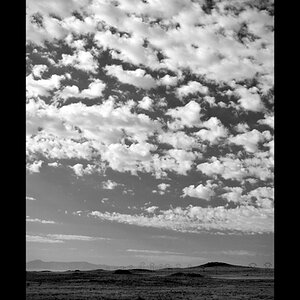
![[No title]](/data/xfmg/thumbnail/36/36393-86ce601930c671b92b6df002b7fcbd0b.jpg?1619737548)

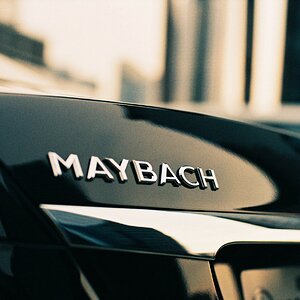
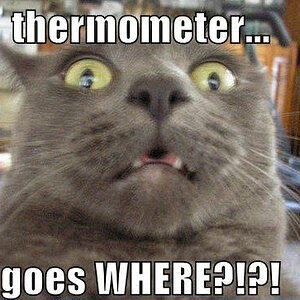
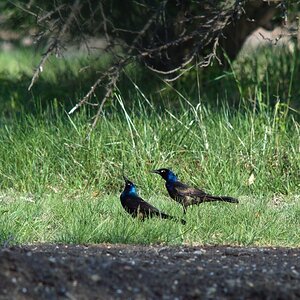
![[No title]](/data/xfmg/thumbnail/35/35264-5ade32b7036391926536661aeb7491c3.jpg?1619736969)
